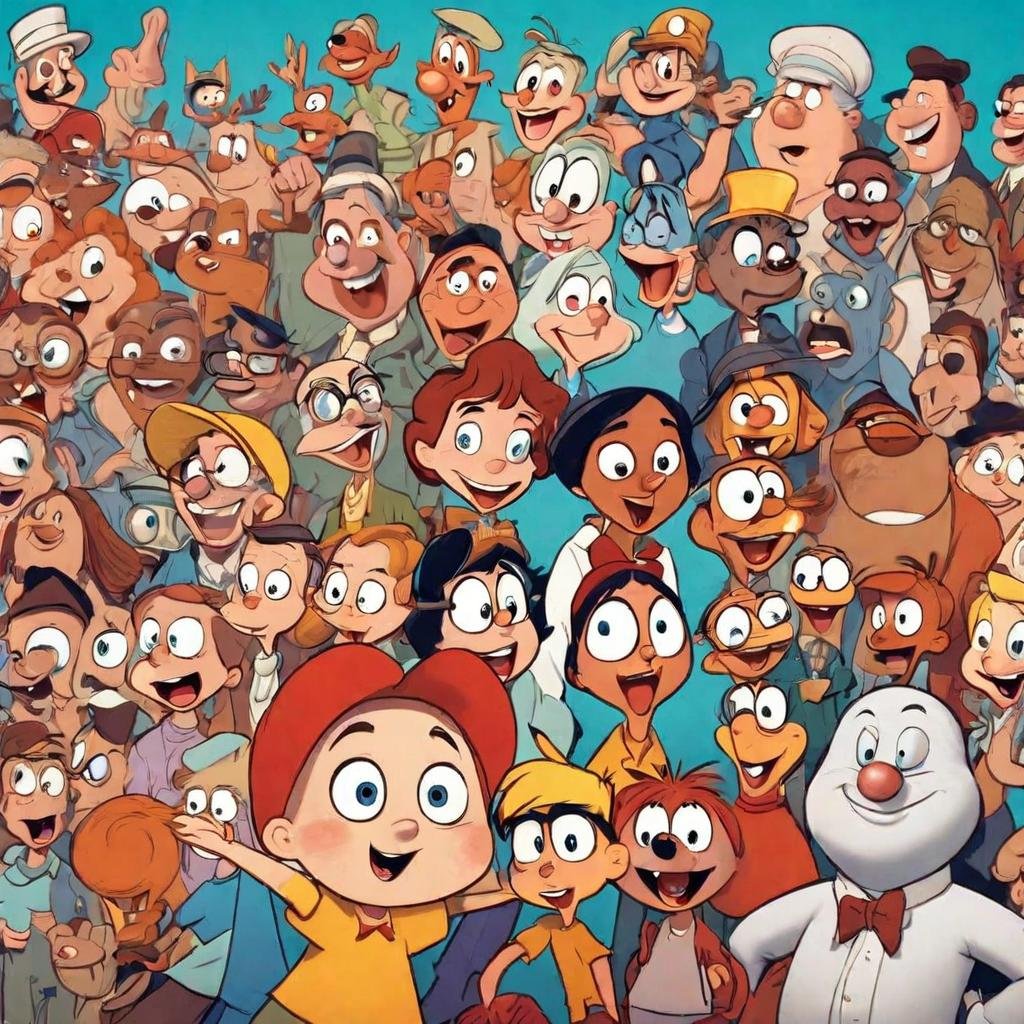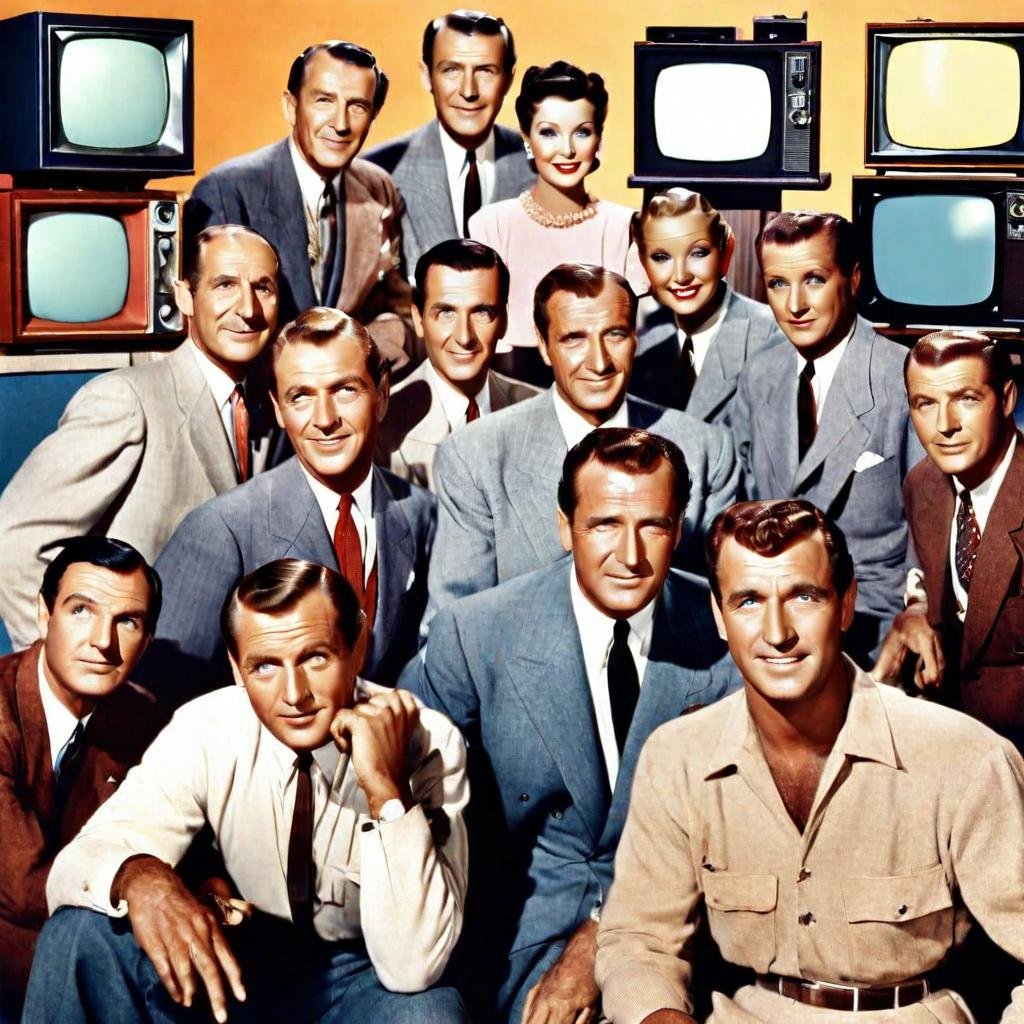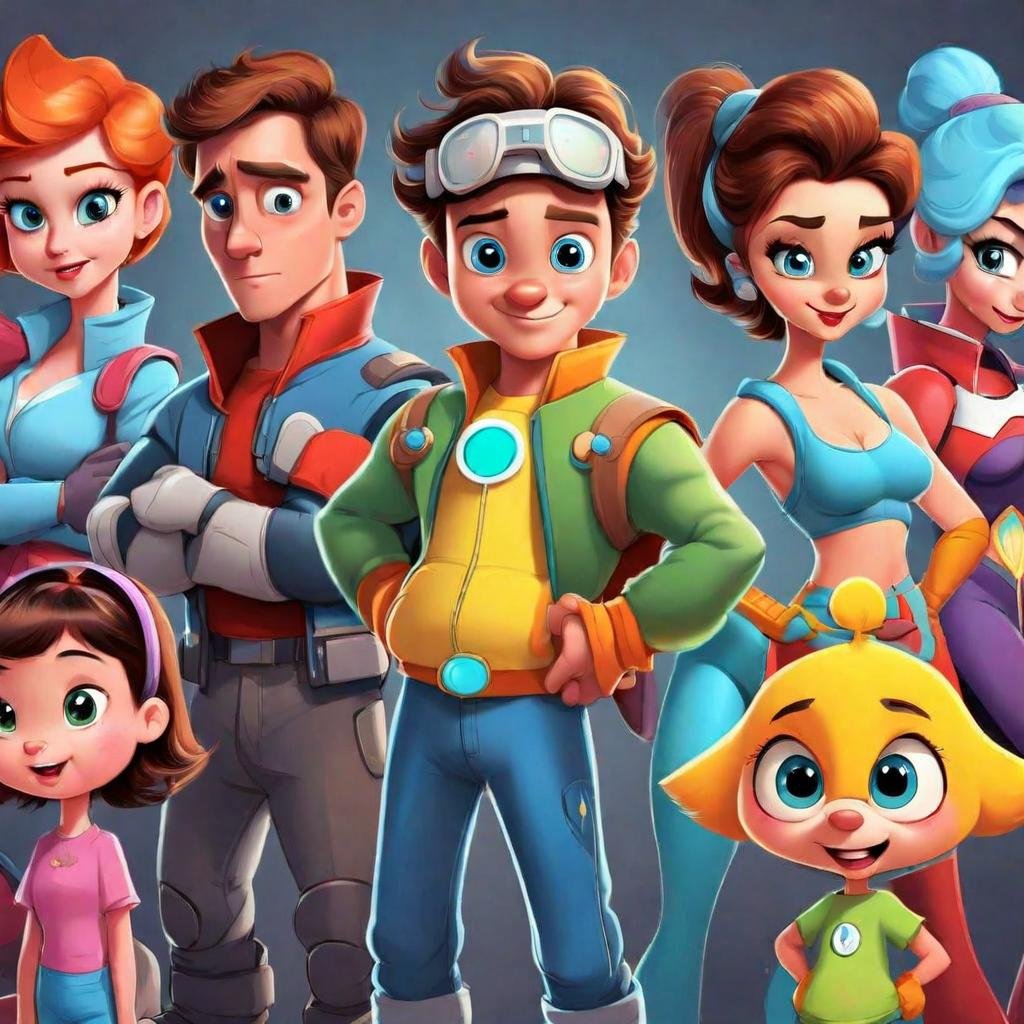I. Introduction
Cartoon characters have been a huge piece of mainstream society for north of a long period, dazzling crowds with their capricious stories and clear characters. From early hand-attracted figures to modern computerized manifestations, Cartoon characters have developed close by progressions in liveliness innovation. This blog investigates the excursion of Cartoon characters through movement history, featuring key turns of events, notable characters, and their social effect.
The historical backdrop of cartoon characters traces all the way back to the mid twentieth century when activity was in its earliest stages. Trailblazers like Winsor McCay acquainted crowds with vivified figures like Gertie the Dinosaur, displaying the capability of energized narrating. These early cartoon characters were basic at this point compelling in catching the creative mind of watchers. The appearance of liveliness brought another type of amusement that joined craftsmanship and innovation, making way for future developments.

III. The Brilliant Time of Cartoon
The Brilliant Time of Liveliness, crossing from the 1930s to the 1950s, denoted a huge period in the development of cartoon characters. This time saw the ascent of notable characters, for example, Mickey Mouse, made by Walt Disney, and Bugs Rabbit from Warner Brothers. Studios like Disney, Warner Brothers., and Fleischer Studios ruled the business, creating excellent movements that became social tourist spots.
During this time, mechanical progressions assumed a critical part in upgrading the nature of movement. The presentation of synchronized sound and Technicolor changed the business, taking into consideration more expressive and dynamic cartoon characters. Films like Disney’s “Snow White and the Seven Diminutive people” and Warner Brothers.’ “Looney Tunes” series exhibited the capability of vivified narrating, making cartoon characters commonly recognized names.
IV. The Television Era
The progress from film to TV during the twentieth century carried tremendous changes to the universe of cartoon characters. TV gave another stage to movement, making it more open to a more extensive crowd. Well known television cartoon characters arose, like The Flintstones, made by Hanna-Barbera, and Scooby-Doo, which became staples of youngsters’ customizing.

This period additionally saw changes in liveliness styles and creation methods. Restricted movement, which utilized less casings each second, turned into a practical strategy for delivering television kid’s shows. In spite of the less complex activity style, characters like Fred Flintstone and Scooby-Doo became darling figures, exhibiting serious areas of strength for that plan and drawing in narrating could enthrall crowds no matter what the medium.
V. Modern Animation and Cartoon Characters
The late twentieth and mid 21st hundreds of years carried another influx of development to the liveliness business. The ascent of advanced activity and PC produced symbolism (CGI) changed the manner in which animation characters were made and rejuvenated. Studios like Pixar and DreamWorks Movement drove the way with historic movies, for example, “Toy Story” and “Shrek,” acquainting crowds with characters like Woody, Buzz Lightyear, and Shrek.
Current animation characters are much of the time more mind boggling and multi-layered, mirroring the progressions in movement innovation and narrating methods. Characters like SpongeBob SquarePants, from the long-running Nickelodeon series, and Homer Simpson from “The Simpsons” have become social symbols, interesting to the two kids and grown-ups. Streaming stages like Netflix and Disney+ have additionally extended the scope of vivified content, taking into consideration a different scope of characters and stories.
VI. Social Effect of Cartoon Characters
Cartoon characters have a significant social effect, impacting normal practices and reflecting cultural changes. As society has become more different, so too have the characters that populate enlivened universes. Today, there is a more noteworthy accentuation on portrayal and consideration, with cartoon characters depicting many races, sexes, sexual directions, and societies. Shows like “Steven Universe” and “The Legend of Korra” are commended for their comprehensive characters and moderate topics.
Additionally, cartoon characters frequently act as vehicles for social critique, resolving significant issues and testing generalizations. For instance, “South Park” is known for its mocking interpretation of contemporary issues, while “BoJack Horseman” investigates complex subjects like emotional wellness and enslavement through its human characters.
The worldwide reach of cartoon characters can’t be put into words. Characters like Mickey Mouse, Pikachu from “Pokémon,” and Hi Kitty have become global symbols, rising above social and phonetic boundaries. These characters engage as well as encourage a feeling of shared social experience across the world.
VII. The Future of Cartoon Characters
The eventual future of cartoon characters is ready to be formed by arising patterns and mechanical headways. Computer generated reality (VR) and increased reality (AR) are opening additional opportunities for intelligent and vivid enlivened encounters. Computer based intelligence driven activity apparatuses are empowering makers to foster more similar and dynamic characters, pushing the limits of what is conceivable in movement.
Variety and portrayal will keep on being critical in the production of cartoon characters. As crowds request more comprehensive and engaging characters, movement studios are probably going to focus on stories that mirror the different world we live in. This shift advances the narrating scene as well as guarantees that all watchers see themselves addressed on screen.

VIII. Conclusion
From the beginning of hand-attracted figures to the modern computerized manifestations of today, cartoon characters have progressed significantly. They have engaged, enlivened, and reflected cultural changes all through movement history. As innovation keeps on developing, the fate of cartoon characters guarantees much more advancement and inclusivity, guaranteeing that these darling figures stay an indispensable piece of our social texture.
FAQs: Cartoon Characters: An Excursion Through Liveliness History
What is the meaning of cartoon characters in mainstream society?
Cartoon characters play had a fundamental impact in molding mainstream society by giving diversion, affecting style and language, and filling in as symbols for different social and social developments.
How did the progress from film to TV influence cartoon characters?
The shift from film to TV during the twentieth century prompted the making of well known television cartoon characters like The Flintstones and Scooby-Doo. This progress likewise got changes movement styles and creation procedures, making kid’s shows more open to a more extensive crowd.
How have innovative progressions impacted movement and cartoon characters?
Mechanical progressions, like computerized movement and CGI, have changed the liveliness business by taking into consideration more nitty gritty and dynamic person plans, smoother activity, and new narrating prospects.
Which job in all actuality do cartoon characters play in addressing variety?
Cartoon characters have progressively reflected cultural changes by advancing variety and incorporation. This incorporates addressing various races, sexual orientations, sexual directions, and societies, assisting with encouraging an additional comprehensive media scene.
How really do cartoon characters impact social and social standards?
Cartoon characters frequently mirror and shape social and social standards through their ways of behaving, values, and the narratives they tell. They can resolve significant issues, challenge generalizations, and motivate watchers to ponder the world.
What is the worldwide reach of cartoon characters?
Cartoon characters have a worldwide allure, rising above social and etymological boundaries. Notorious characters like Mickey Mouse, Pikachu, and Hi Kitty are perceived and cherished around the world, exhibiting the widespread effect of vivified characters.
What patterns are arising in store for animation and cartoon characters?
Arising patterns in liveliness incorporate the utilization of computer generated reality (VR) and expanded reality (AR), progressions in man-made brainpower (artificial intelligence) for character movement, and a proceeded with accentuation on variety and portrayal. These patterns will shape the Future of cartoon characters and the tales they tell.

2 thoughts on “Cartoon Characters: A Delightful Journey Through Animation History 2024”